NCERT Solutions for Class 10 Civics Chapter 4 – Political Parties
NCERT Solutions for Class 10 Civics Chapter 4 – Political Parties are essential for understanding the functioning and importance of political parties in a democracy under the CBSE curriculum. These well-structured answers help students grasp topics like types of parties, national vs. regional parties, party systems, and reforms needed in the political system. Designed as per the latest syllabus, these solutions strengthen conceptual clarity and improve exam preparation. Ideal for revision and practice, they promote political literacy and democratic values, making them a valuable study tool for scoring well in Class 10 Social Science exams.
NCERT Solutions For Class 10 Civics – Political Parties – Exercise Images
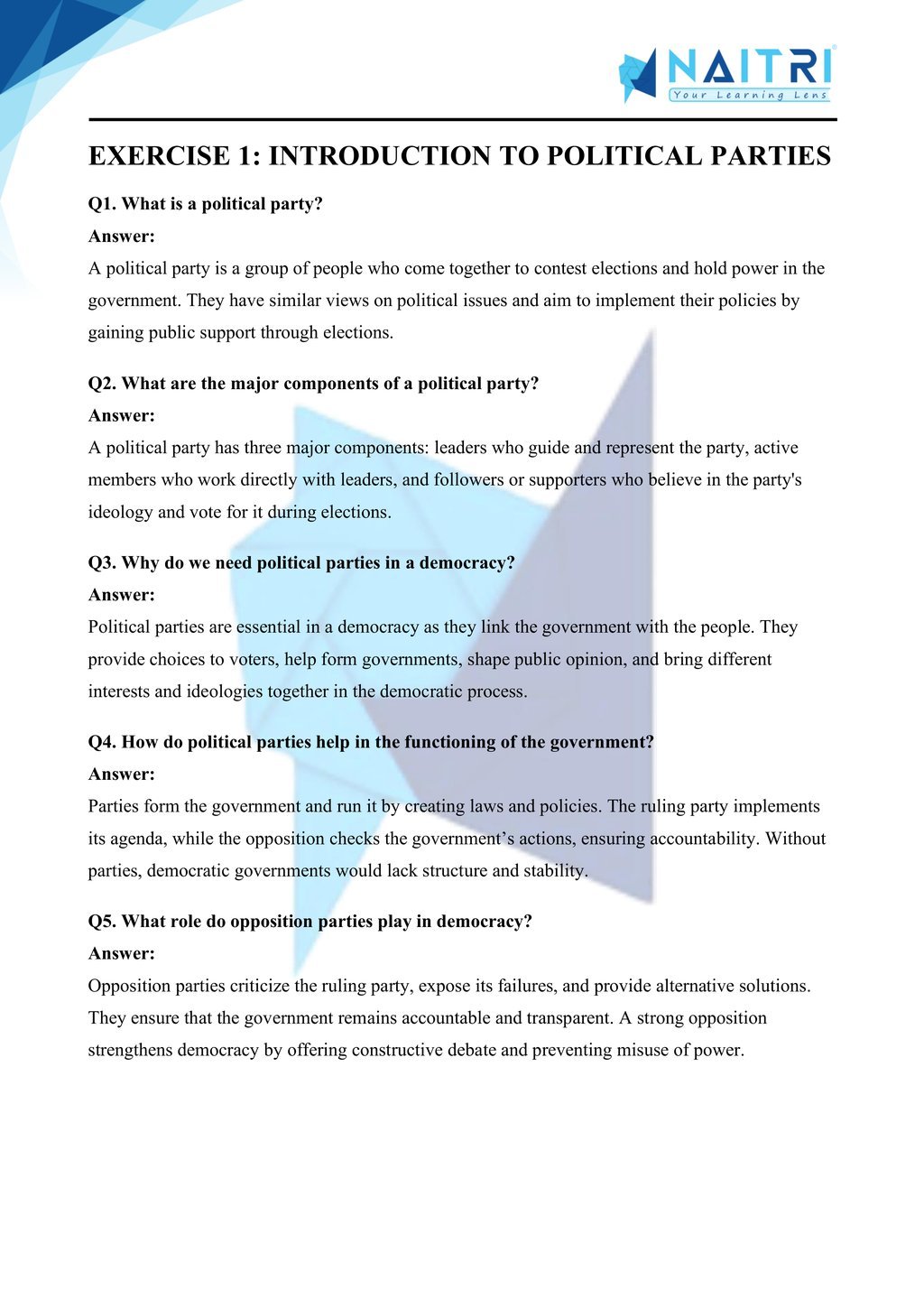
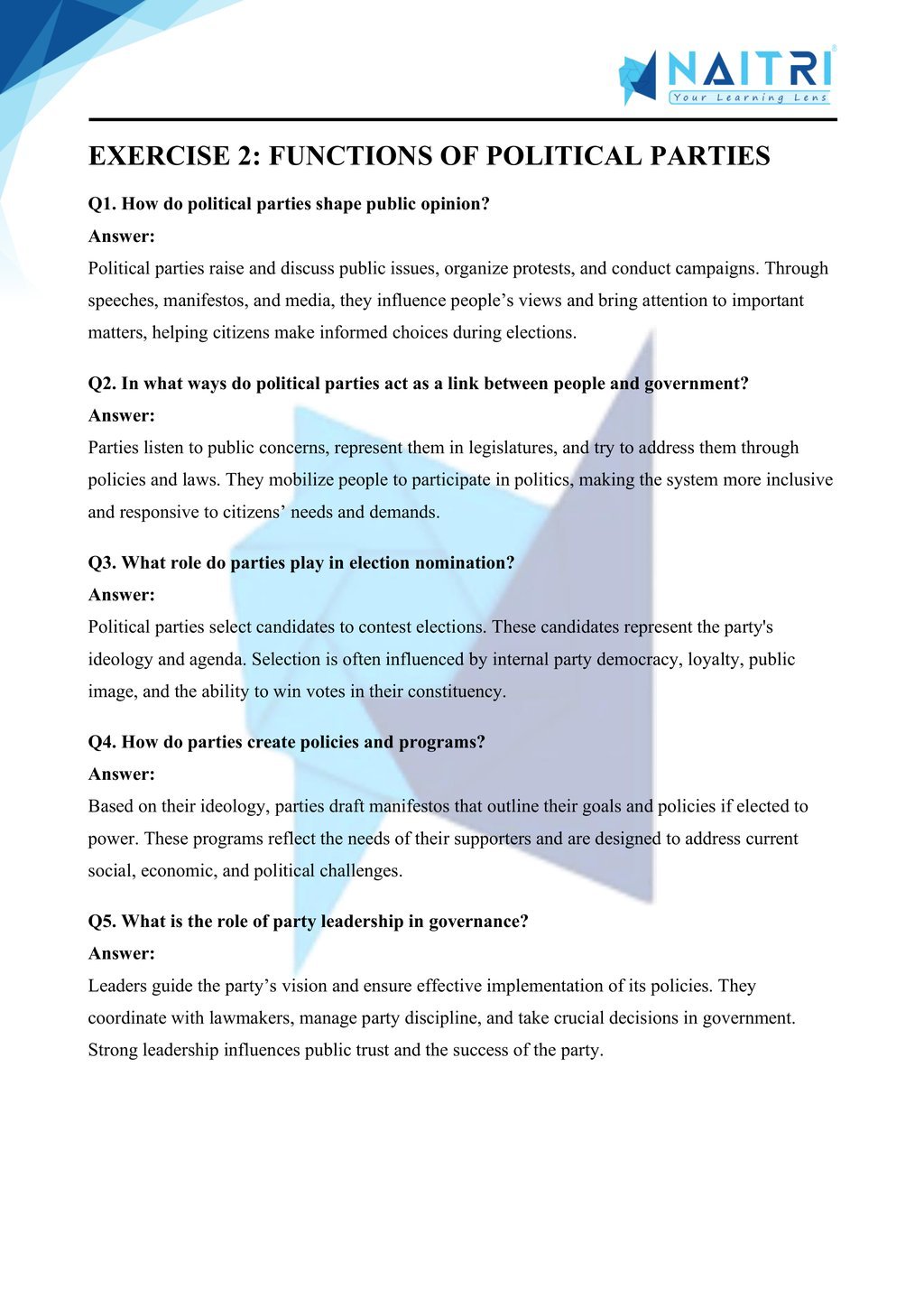
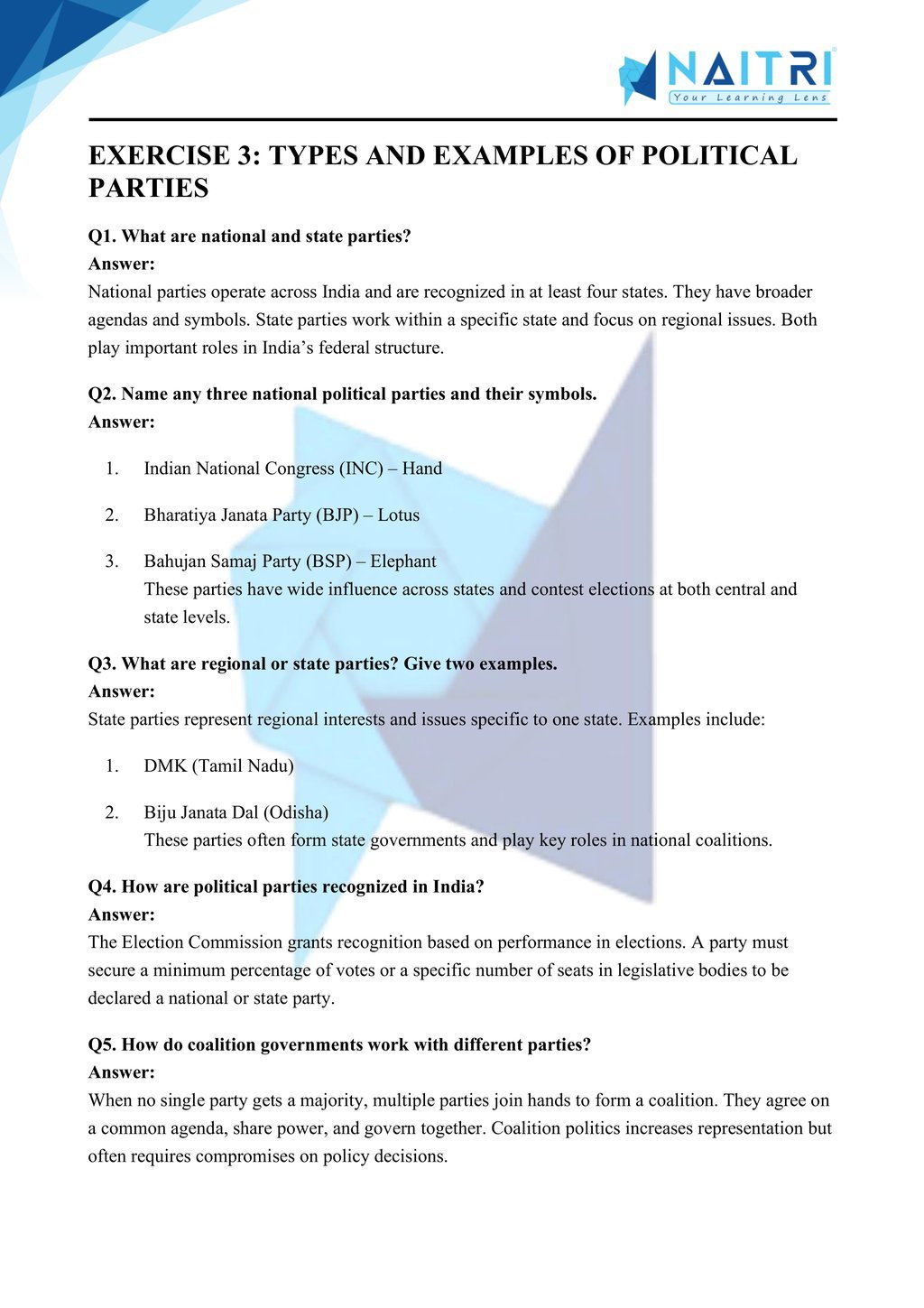
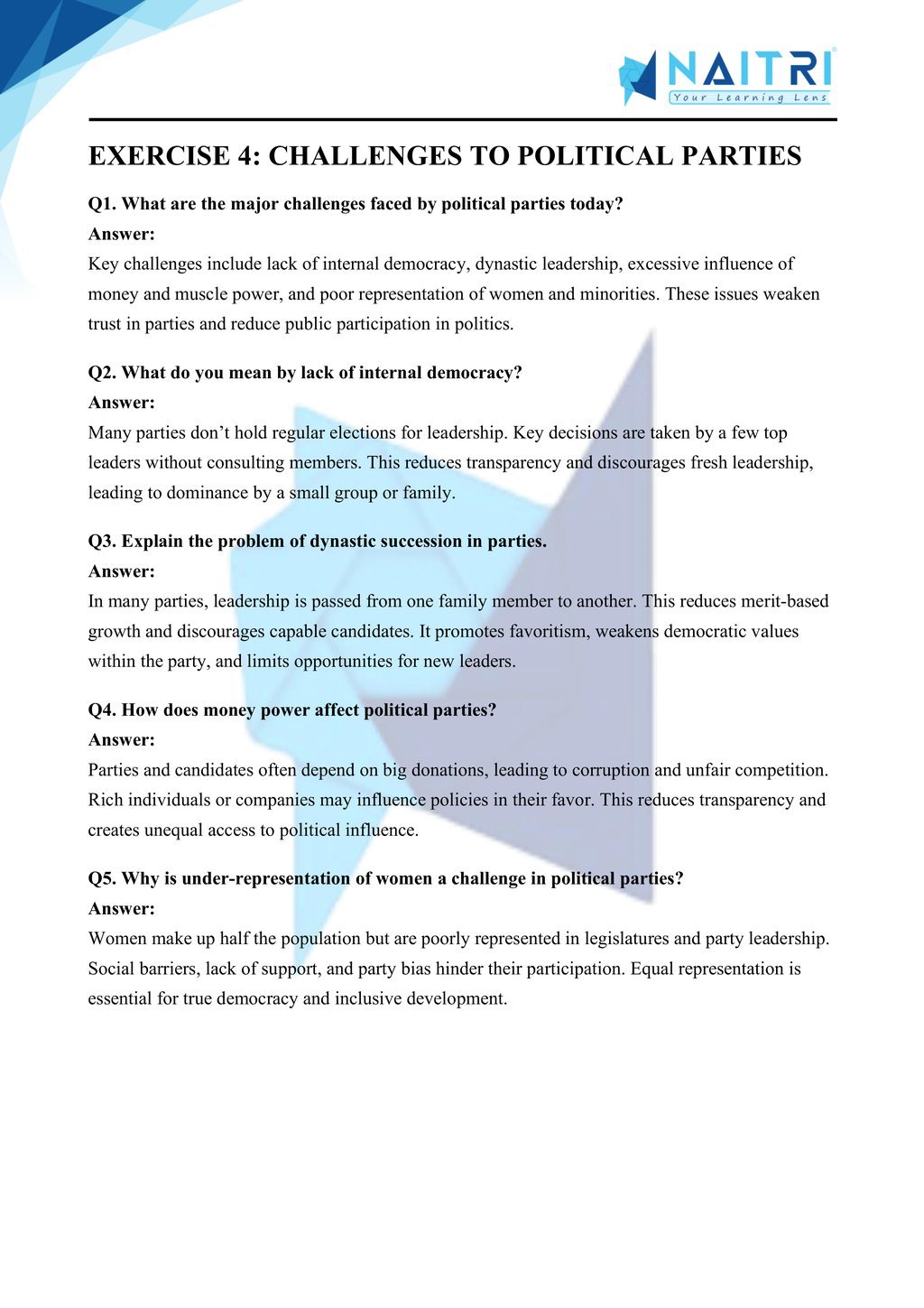
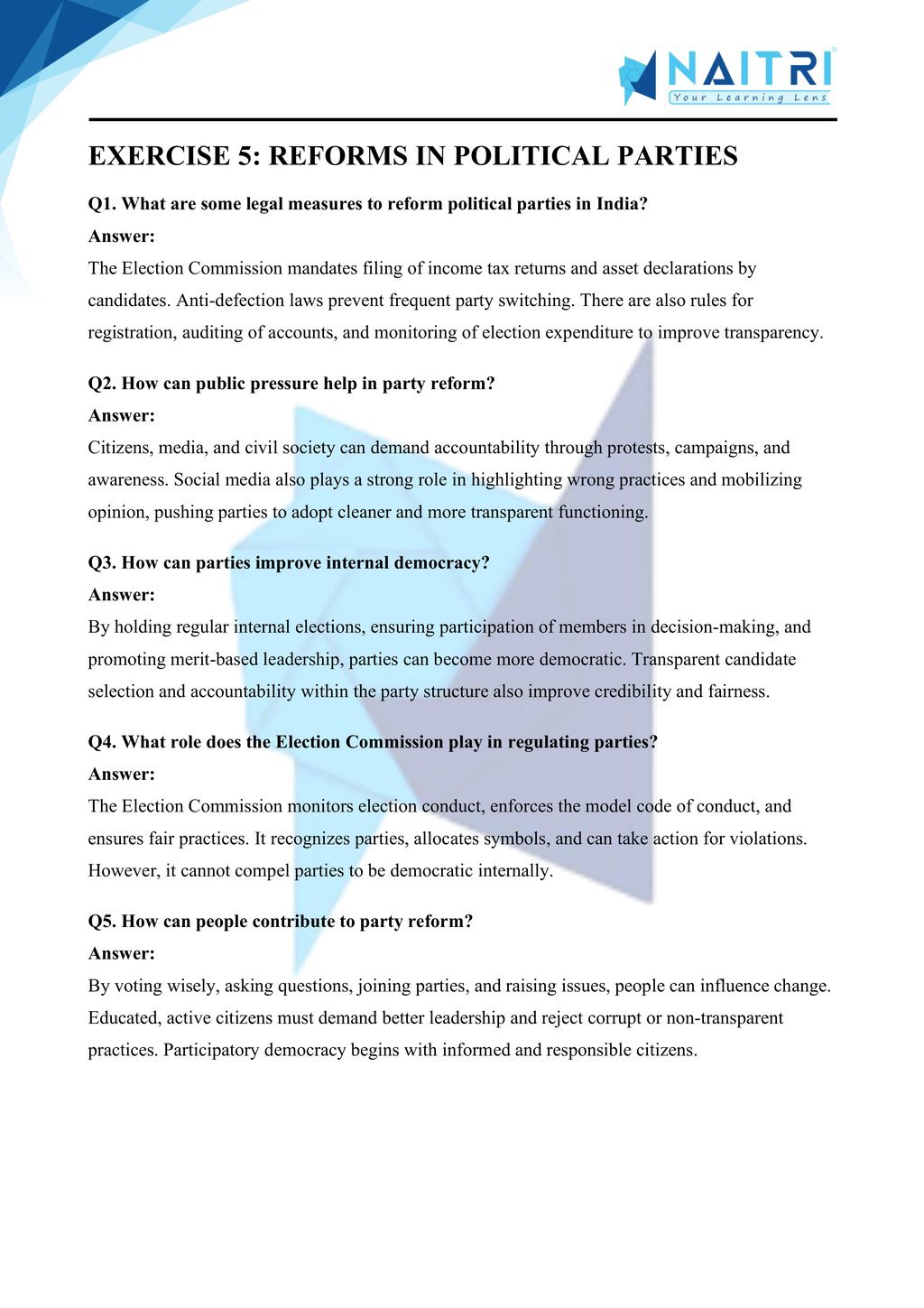
Experience Civics Like Never Before – With AR!
Understanding Political Parties is now more exciting and immersive! With the NAITRI App, you can explore complex civics concepts through Augmented Reality (AR). See parties rise, manifestos unfold, and electoral competition play out — right in front of you. Our AR-powered lessons make learning interactive, 3D, and fun, helping you retain concepts better and enjoy every topic.



Visualize . Interact . Understand . The future of learning is here
Political Parties – Important Questions with Answers
What is a political party?
Answer: A political party is a group of people with similar ideologies and policies who aim to gain power through elections and run the government.What are the main functions of political parties?
Answer: Political parties contest elections, form policies, make laws, mobilize public opinion, and act as a link between the government and the people.Why do we need political parties?
Answer: Political parties simplify choices for voters, represent diverse interests, ensure responsible government, and provide structure to democratic politics.What are the characteristics of a political party?
Answer: A political party has a clear ideology, organized structure, leadership, membership, and a goal to attain political power through elections.What are national and state parties?
Answer: National parties operate across the country and influence national policies. State parties are confined to particular states and focus on regional issues.Name any three national political parties in India.
Answer: Three major national parties are:
Indian National Congress (INC)
Bharatiya Janata Party (BJP)
Communist Party of India (CPI)
How is a political party recognized as a national party?
Answer: A party is recognized as national if it secures at least 6% of votes in four or more states and wins 4 Lok Sabha seats.What challenges do political parties face in India?
Answer: Challenges include dynastic succession, lack of internal democracy, money and muscle power, and failure to offer meaningful choice to voters.What is meant by dynastic succession in political parties?
Answer: Dynastic succession refers to political leadership being passed on to family members, weakening meritocracy and promoting nepotism.How does money power affect elections?
Answer: Wealthy candidates often buy votes, dominate campaigns, and influence policies, making elections unfair and reducing the voice of ordinary citizens.What do you mean by lack of internal democracy in parties?
Answer: Most parties lack regular elections, do not maintain transparency, and decisions are often taken by top leaders without consultation with members.How can political parties be reformed?
Answer: Reforms can include mandatory inner-party elections, financial transparency, enforcing anti-defection laws, and empowering the Election Commission.What is an alliance in politics?
Answer: When two or more parties join hands to contest elections or form a government, it is known as a coalition or alliance.What is meant by party system?
Answer: A party system refers to the number and types of political parties in a country. It can be one-party, two-party, or multi-party system.What type of party system exists in India?
Answer: India has a multi-party system, where several parties contest elections and often form coalitions at both central and state levels.What are the advantages of a multi-party system?
Answer: It represents diverse interests, allows for broader participation, and prevents the monopoly of powerby a single party.What are the disadvantages of a multi-party system?
Answer: It can lead to unstable governments, frequent coalition conflicts, and difficulty in decision-making due to diverse ideologies.What is defection in politics?
Answer: Defection means an elected representative changing party loyalty for personal benefit, which weakens democracy and ethics in politics.What is the Anti-Defection Law?
Answer: This law disqualifies legislators who defect to another party, aiming to curb political corruption and promote loyalty to party mandates.How do regional parties strengthen democracy?
Answer: Regional parties focus on local issues, represent minority groups, and bring regional aspirations into national politics, deepening democratic representation.What role does the Election Commission play in party regulation?
Answer: The Election Commission registers parties, monitors election expenses, allots symbols, and ensures free and fair elections through impartial conduct.What is meant by political polarization?
Answer: Political polarization refers to the growing divide between parties or ideologies, often leading to extreme partisanship and weakening consensus politics.How do political parties create public opinion?
Answer: Through campaigns, rallies, manifestos, and media, parties educate people, raise issues, and influence public perception and voting behavior.Why is transparency in party funding important?
Answer: It reduces corruption, ensures fairness, and builds public trust by revealing where and how parties receive and spend their financial resources.Suggest one reform to make parties more democratic.
Answer: Introducing mandatory internal elections at all levels can make parties more inclusive, transparent, and responsive to members and citizens.
Political Parties focuses on the role of parties in the functioning of democracy. Students learn why parties are necessary, how they are formed, and their classification into national and regional parties. The chapter also discusses the challenges political parties face, such as lack of internal democracy and corruption. By analyzing the structure and functions of political parties, students understand how they serve as a link between the government and the people.
Related Chapters You May Like
Download Naitri App
Easy, Visual Learning — Right on Your Phone
Learn with Augmented Reality! The Naitri app makes CBSE and MP Board concepts interactive and fun — even in low-resource settings. Watch lessons, complete homework, take tests, and track progress — all in one place. Anytime. Anywhere.
Available on








